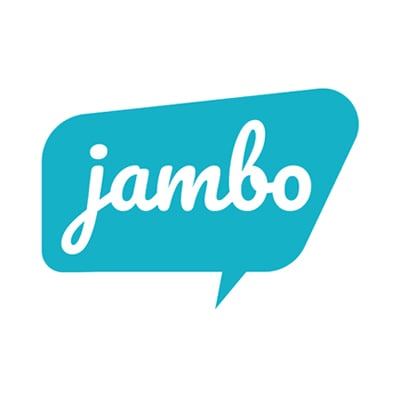
Los proyectos de energías renovables son fundamentales para reducir nuestra huella de carbono en la transición hacia un futuro sostenible. Sin embargo, estas iniciativas suelen tropezar con importantes obstáculos.
Un factor vital para superar estos retos es cultivar relaciones sólidas con las partes interesadas: personas o grupos directamente afectados por el proyecto o interesados en su éxito, como comunidades locales, empresas, propietarios de tierras, organismos públicos, inversores y organizaciones medioambientales.
Una comunicación clara y unas expectativas fijadas pueden ayudar mucho a prevenir problemas y mantener buenas relaciones con las partes interesadas. Los equipos de energías renovables pueden agilizar este proceso utilizando un software de gestión de las relaciones con las partes interesadas (SRM) como Jambo.
Este artículo explorará las estrategias para mitigar eficazmente las preocupaciones de las partes interesadas y fomentar relaciones positivas.
Compromiso de las partes interesadas y gestión de las expectativas
Identificación y compromiso de las partes interesadas
Para empezar, es vital identificar a todas las partes interesadas importantes e involucrarlas en las primeras fases del proceso. Pasar por alto a grupos o partes interesadas clave puede provocar retrasos u oposición, perjudicando al proyecto. Trazar un mapa de las partes interesadas garantiza que no se pase por alto ninguna voz crítica.
Los proyectos de energías renovables pueden fomentar un sentimiento de apropiación y cooperación mediante la participación de los grupos de interés identificados. Por ejemplo, es esencial incluir a los líderes de las comunidades locales que entienden las necesidades y preocupaciones específicas de sus barrios, a las comunidades indígenas o naciones tribales cuyas tierras tradicionales pueden verse afectadas por el desarrollo del proyecto, y a los funcionarios del gobierno que desempeñan un papel crucial en la aprobación y supervisión reglamentaria.
Las comprobaciones y actualizaciones periódicas ayudan a generar confianza y a mantener a todo el mundo informado. Esto permite a los proyectos abordar de forma proactiva las preocupaciones y los malentendidos, compartir los avances y los hitos de forma transparente y fomentar la colaboración y los comentarios a lo largo de todo el ciclo de vida del proyecto.
Gestión de expectativas y compromisos
Gestionar las expectativas es igualmente vital para construir relaciones sólidas con las partes interesadas. La confianza de las partes interesadas puede disiparse rápidamente si tienen expectativas poco realistas o si se incumplen las promesas. Para evitarlo, es crucial una comunicación clara sobre los objetivos, plazos y resultados del proyecto. Esto ayuda a alinear las expectativas de todos con las realidades del proyecto, garantizando que todas las partes estén de acuerdo.
Por ejemplo, si se compromete a crear puestos de trabajo para la comunidad local, es esencial cumplir esa promesa para evitar decepciones y reacciones negativas. Establecer expectativas realistas y cumplir sistemáticamente los compromisos puede generar confianza entre las partes interesadas y mantener su apoyo durante todo el ciclo de vida del proyecto.
Consejo para gestionar las expectativas de las partes interesadas: Todo el mundo tiene expectativas sobre ti, y la única forma de cumplirlas es preguntándoles qué esperan o fijándolas tú mismo. Las expectativas se crean cuando se hacen promesas o se comunican detalles importantes del proyecto. El seguimiento de estas promesas y comunicaciones mediante Gestión de las relaciones con las partes interesadas (SRM) ayuda a garantizar que todos los miembros del equipo entienden el compromiso adquirido y pueden mantener la coherencia en los mensajes.
Fallo de comunicación
La comunicación eficaz es vital para evitar malentendidos y rupturas. Cuando los canales son ineficaces o las partes interesadas no se sienten escuchadas, puede surgir rápidamente la desconfianza. Para evitarlo, es esencial crear un entorno en el que todas las voces sean escuchadas y valoradas. Esto puede lograrse haciendo un seguimiento de los debates clave en las reuniones con las partes interesadas, lo que le permitirá recordar conversaciones importantes y estar preparado para futuras interacciones.
El uso de una ubicación centralizada como Jambo para registrar toda la información del proyecto proporciona a su equipo una única fuente de verdad, asegurando que todos puedan acceder a los mismos detalles actualizados. Esto ayuda a evitar la confusión, construye relaciones más fuertes y promueve una dinámica de equipo más cohesionada, lo que en última instancia conduce a mejores resultados de las partes interesadas.
Impacto medioambiental y social
Abordar las repercusiones medioambientales y sociales es primordial, ya que estas cuestiones suelen dominar las preocupaciones de las partes interesadas. Como cualquier proyecto de desarrollo, los de energías renovables pueden tener efectos de gran alcance en la fauna, la flora, las comunidades locales y el paisaje.
Por ejemplo, el sistema de generación eléctrica solar de Ivanpah, en California, se enfrentó a importantes problemas relacionados con su impacto en la población de tortugas del desierto. El proyecto se redujo para no afectar al hábitat de las tortugas y se aplicaron estrategias para reducir la mortalidad de aves y murciélagos causada por las torres solares.
La comunicación eficaz con las partes interesadas fue crucial para abordar estas preocupaciones medioambientales y mantener el apoyo al proyecto, garantizando en última instancia su desarrollo con éxito.
Cumplimiento de la normativa y adaptación de las políticas
Retos normativos y políticos
Navegar por el complejo panorama normativo es un obstáculo importante para los proyectos de energías renovables, ya que los frecuentes cambios políticos y las nuevas y complejas normativas exigen un cumplimiento vigilante y adaptabilidad.
En Estados Unidos, los productores de energía deben cumplir numerosas normativas, como la Ley de Aire Limpio (Clean Air Act), la Ley Nacional de Política Medioambiental (National Environmental Policy Act, NEPA) y las normas de cartera de energías renovables (renewable portfolio standards, RPS) específicas de cada Estado. Mantenerse al día de estos requisitos es crucial para evitar problemas legales y garantizar una ejecución fluida de los proyectos.
Una herramienta SRM puede ayudar haciendo un seguimiento de las actualizaciones normativas y las tareas de cumplimiento, minimizando así los riesgos legales y manteniendo el proyecto dentro de los plazos previstos.
Transparencia e información sobre los proyectos
La transparencia es esencial para generar confianza entre las partes interesadas y cumplir las expectativas normativas. Una transparencia inadecuada puede generar desconfianza y un posible escrutinio por parte de los organismos reguladores.
En la Unión Europea, por ejemplo, la Directiva sobre Informes de Sostenibilidad Corporativa (CSRD ) obliga a muchas empresas a adoptar enfoques más rigurosos en la elaboración de informes de sostenibilidad. Entender cómo pueden afectar estas normativas a su organización es crucial para poder planificar un enfoque estratégico de participación de las partes interesadas.
Los informes periódicos sobre los avances y retos del proyecto son vitales para mantener la confianza de las partes interesadas. Estos informes deben incluir datos sobre los hitos del proyecto, los resultados de la supervisión medioambiental y el rendimiento financiero.
Una herramienta SRM puede simplificar este proceso permitiéndole crear informes claros y frecuentes que mantengan informados a todos, fomentando así la confianza y la transparencia a lo largo del ciclo de vida del proyecto.
Viabilidad financiera y técnica
Mantener un proyecto financieramente saneado y técnicamente viable es fundamental para su éxito. Los excesos presupuestarios, los déficits de financiación y los problemas de viabilidad económica pueden poner en peligro todo el proyecto.
El proyecto Cape Wind en Massachusetts (EE.UU.) es un ejemplo de proyecto que experimentó problemas financieros que afectaron significativamente a su eventual cancelación. A pesar de superar los obstáculos legales, el proyecto se vino abajo por problemas de financiación. Un seguimiento financiero detallado y una comunicación transparente sobre la situación económica del proyecto ayudan a gestionar eficazmente los presupuestos y a tranquilizar a las partes interesadas sobre la salud financiera del proyecto. Por ejemplo, explicar claramente cómo un proyecto generará ingresos o ahorrará costes puede ayudar a ganar la confianza de los inversores y garantizar la financiación necesaria.
Gestionar el alcance del proyecto también es vital. Si el proyecto sigue creciendo más allá de sus planes originales, puede provocar retrasos y aumentar los costes. Este fenómeno, conocido como desviación del alcance, puede controlarse mediante una planificación detallada del proyecto y una comunicación clara sobre cualquier cambio. Asegurarse de que las partes interesadas comprenden y aceptan los ajustes ayuda a mantener el enfoque del proyecto y evitar desviaciones inesperadas.
Estrategias proactivas de mitigación para proyectos de energías renovables
Mitigar las preocupaciones en los proyectos de energías renovables requiere un enfoque proactivo que implique la participación efectiva de las partes interesadas, una comunicación clara y una gestión transparente de las expectativas.
Los equipos de energías renovables pueden generar confianza y mantener el apoyo a lo largo de todo el ciclo de vida del proyecto identificando e implicando a las principales partes interesadas desde el principio, gestionando las expectativas mediante actualizaciones periódicas e informes de progreso, y abordando las repercusiones medioambientales y sociales.
Con el software de gestión de las relaciones con las partes interesadas (SRM) de Jambo, los equipos pueden agilizar fácilmente sus procesos de compromiso con las partes interesadas, realizar un seguimiento de las métricas clave e informar sobre sus progresos. ¿Le interesa saber más? Reserve una llamada de 15 minutos con nuestro equipo hoy para discutir sus necesidades y cómo Jambo puede apoyar a su organización.









